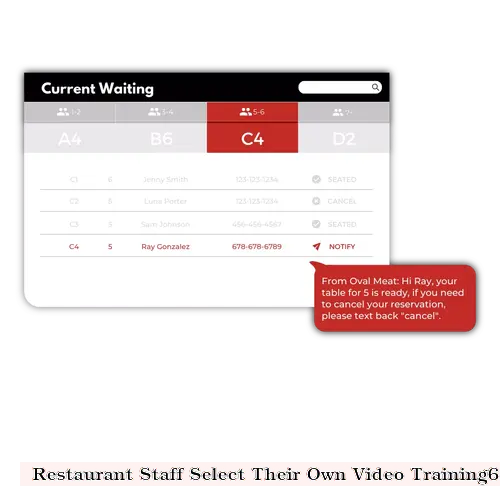

Introduction:
In the fast-paced and constantly evolving restaurant industry, providing staff with effective and engaging training is crucial for success. Traditional training methods can often be time-consuming, costly, and may not cater to individual learning styles. However, a new approach is gaining popularity: allowing staff to select their own video training materials. This method not only empowers employees but also leads to increased knowledge retention, improved job satisfaction, and better overall restaurant performance.
The Benefits of Personalized Video Training:
1. Tailored Learning Experience:
Different staff members have varying learning styles, knowledge levels, and familiarity with technology. By allowing staff to choose their training videos, you cater to their individual needs and preferences. This leads to a more enjoyable learning experience and a higher likelihood of retaining the information.
2. Engagement and Motivation:
When employees have a say in their training, they are more likely to be engaged and motivated to learn. Personalized video training provides a sense of ownership and accountability, which can lead to higher completion rates and a stronger commitment to applying the knowledge gained.
3. Time and Cost-Efficient:
Training staff using traditional methods can be time-consuming and expensive. Video training allows for flexibility, as staff can learn at their own pace and during their downtime. Additionally, creating or purchasing high-quality video content can be more cost-effective than hiring trainers or conducting in-person sessions.
4. Consistency and Standardization:
Video training ensures that all staff receive the same information, maintaining consistency and standardization across the restaurant. This is particularly important for new employees, who can benefit from a clear and comprehensive introduction to the restaurant's operations, culture, and expectations.
5. Real-World Application:
Video training can feature real-world scenarios and practical examples, making it easier for staff to apply the knowledge in their day-to-day tasks. This hands-on approach enhances understanding and promotes better job performance.
6. Improved Communication:
Clear and concise video training can help eliminate misunderstandings and miscommunications. Visual aids, such as animations and demonstrations, can effectively convey complex concepts and procedures, leading to improved communication between staff members and management.
7. Evaluation and Feedback:
Video training platforms often include analytics and assessment tools, allowing managers to track employees' progress and identify areas for improvement. Providing timely and constructive feedback can further enhance staff development and job satisfaction.
Conclusion:
Personalized video training offers numerous benefits for restaurant staff and management alike. By empowering employees to choose their training materials, restaurants can enhance learning, engagement, and performance. As the restaurant industry continues to evolve, investing in modern and effective training methods will remain crucial for staying competitive and maintaining a skilled and motivated workforce.
DISCLAIMER: This information is provided for general informational purposes only, and publication does not constitute an endorsement. Kwick365 does not warrant the accuracy or completeness of any information, text, graphics, links, or other items contained within this content. Kwick365 does not guarantee you will achieve any specific results if you follow any advice herein. It may be advisable for you to consult with a professional such as a lawyer, accountant, or business advisor for advice specific to your situation.
today
Copyright © 2025 Kwick365.com
Designed by KwickPOS is the best restaurant POS